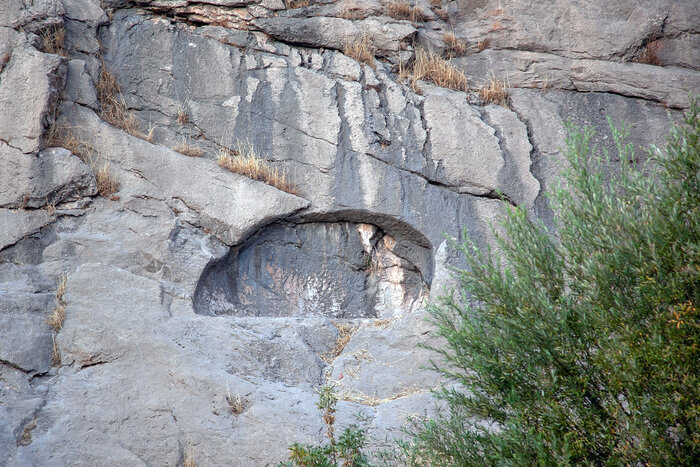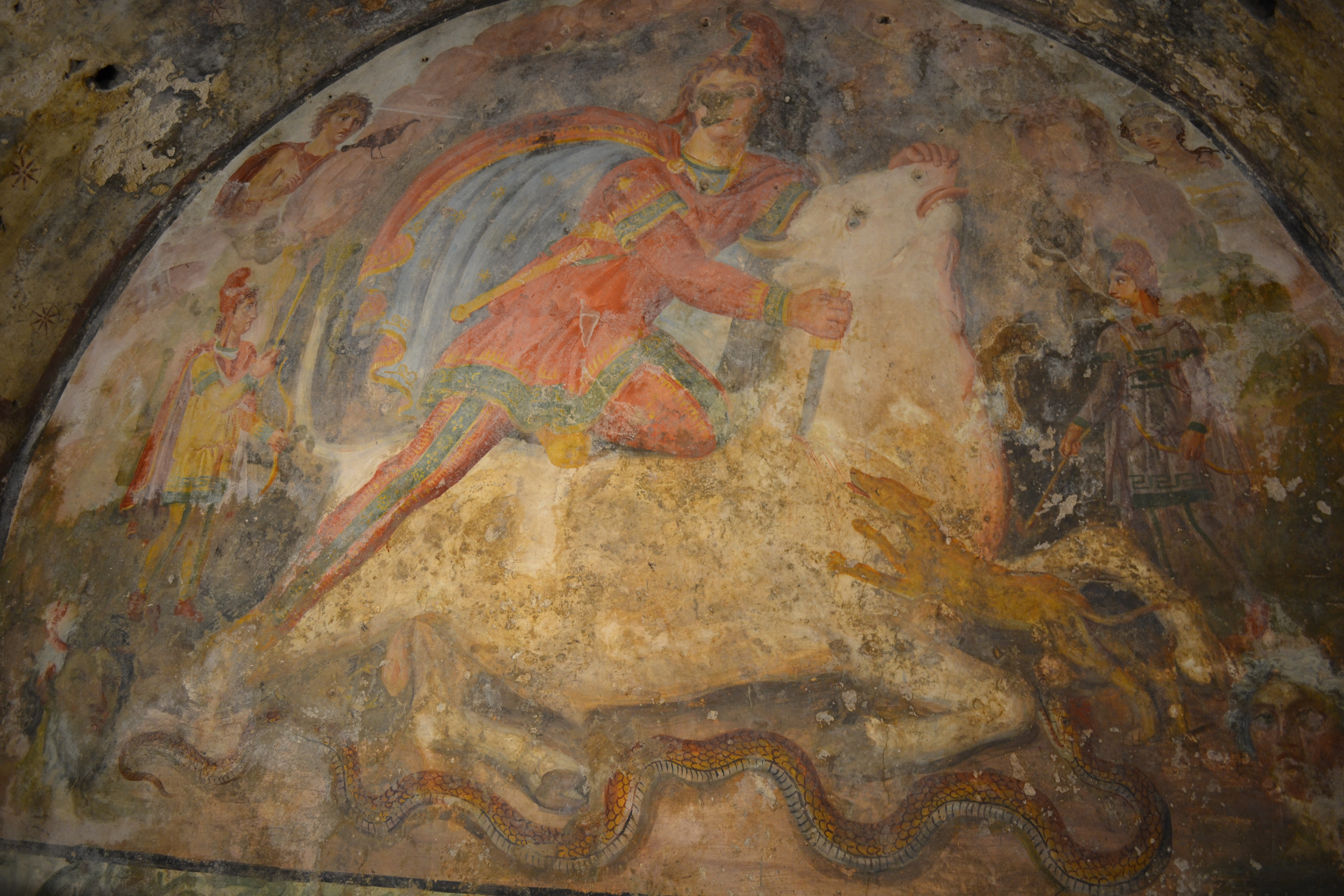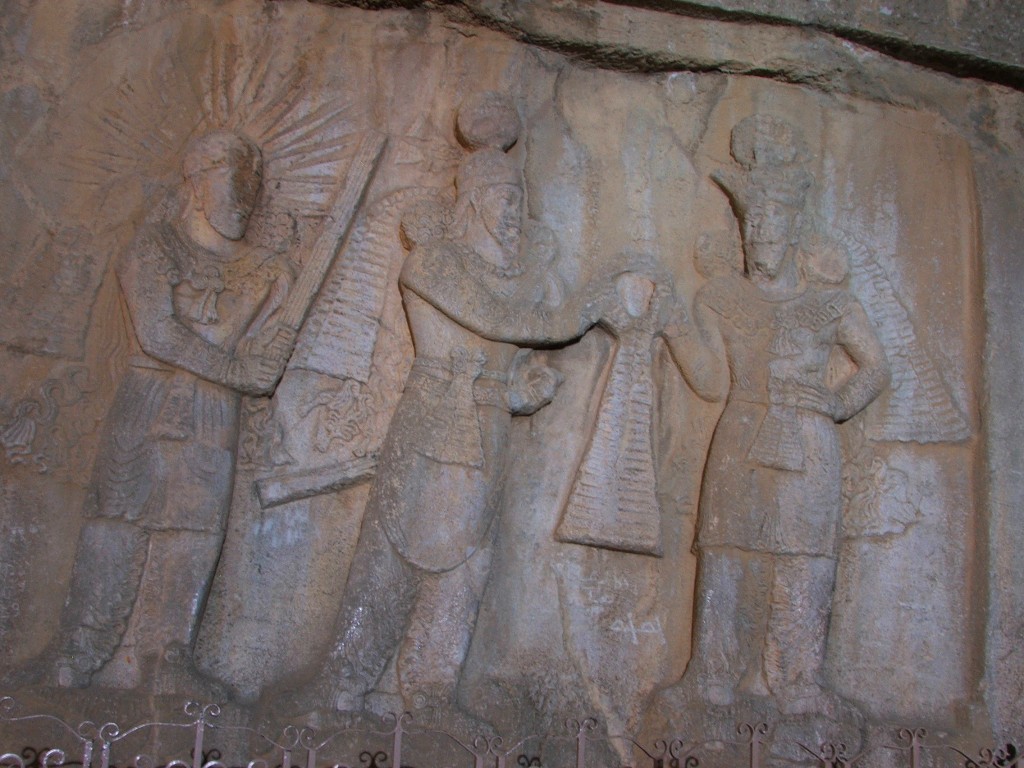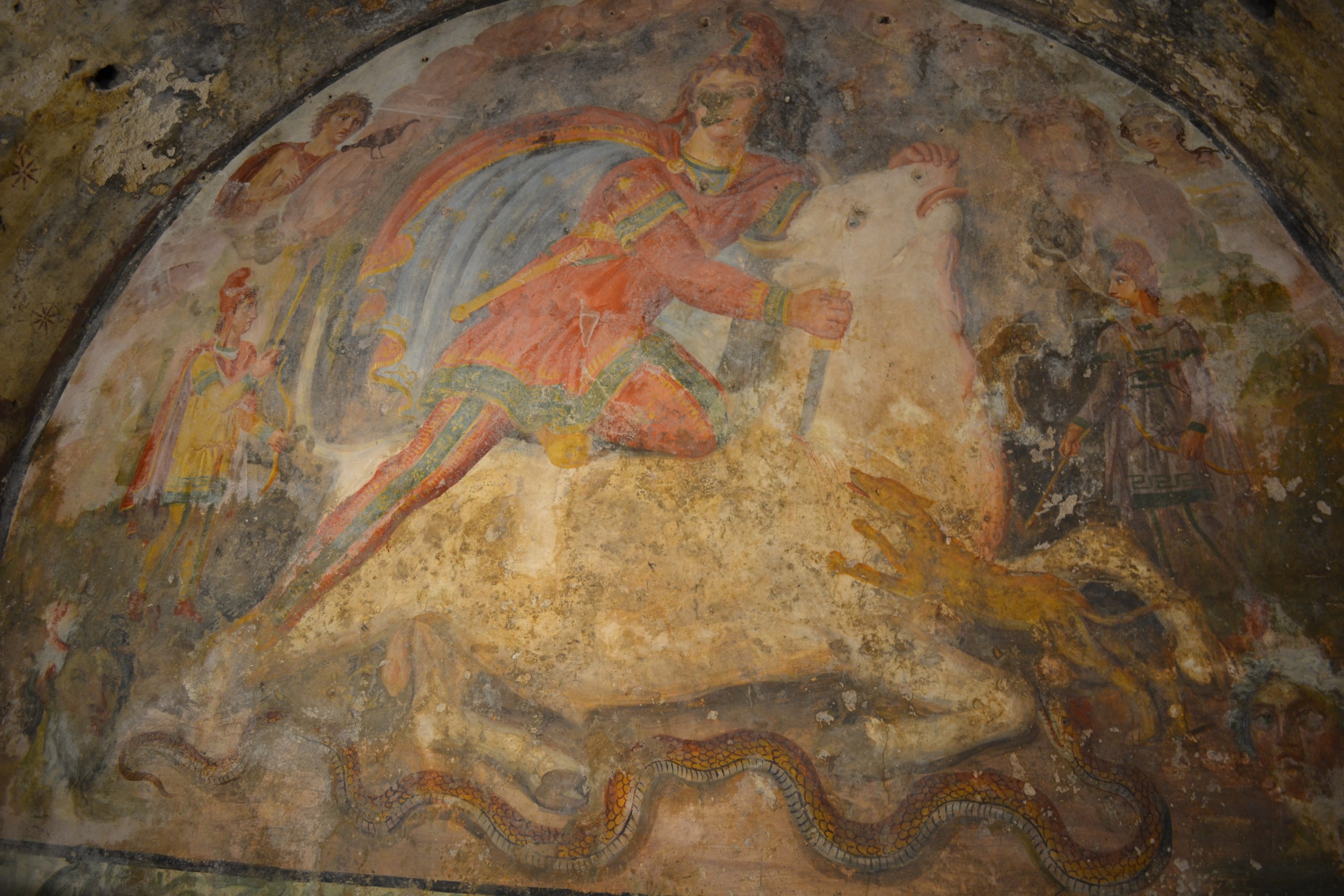The article “Newly-found petroglyph in western Iran may have link to Mithraism” was published in Payvand News of Iran on October 1, 2019 (this was first reported in the Tehran Times). The version printed below has been slightly edited and provided with hyperlinks. Kindly note that excepting one photo, all other images and accompanying captions do not appear in the original Payvand News and Tehran Times postings.
=======================================================================================
A newly-discovered rock-carving in western Iran could have a link to Mithraism, a prehistorical religion inspired by Iranian worship of the Zoroastrian god Mithra. Some Iranian archaeologists suggest that the carving was created by a follower of Mithraism as it depicts a simple portrayal of a human with his right hand raised and an object in his hand. But, experts say it needs much more study in order to date the petroglyph.

A rock carving in western Iran (Source: Payvand News).
The petroglyph was found in western Kermanshah province on a mountainside near Taq-e Bostan, an archaeological complex, which consists of a series of properties from prehistoric to historical periods such as imposing Sassanid-era bas-reliefs, Morad-Hassel Tepe, an ancient village, a Parthian graveyard and a Sassanid hunting ground.
It was found upstream of a spring, inside a niche measuring about two meters by two meters, carved some 50 centimeters deep into the mountainside, archaeologist Keyvan Moumivand told IRNA on Tuesday.
Meanwhile, a local tourism official has said that various archaeologists and teams of experts must conduct researches on the rock-carving in order to determine its origins and to make a definitive comment on it.

Depiction of Mithras with Persian dress of the (Parthian and Early-Mid Sassanian era type) slaying the sacred bull at the Santa Maria Capua Vetere.
Some experts say that existence of some Mithraism symbols in parts of the historical zone, including one nearby the bas-relief of Ardashir II, reinforces a possibility that the petroglyph being associated with Mithraism, IRNA reported.
Mithraism, was the worship of Mithra, an Iranian god of the sun, justice, contract, and war in pre-Zoroastrian Iran. Known as Mithras in the Roman Empire during the 2nd and 3rd centuries CE, this deity, according to Britannica Encyclopedia, was honored as the patron of loyalty to the emperor. After the acceptance of Christianity by the emperor Constantine in the early 4th century, Mithraism rapidly declined.

Investiture of Ardashir II (r. 379-383) (center) by the supreme God Ahuramazda (right) with Mithra (left) standing upon a lotus (Ghirshman, 1962 & Herrmann, 1977). Trampled beneath the feet of Ahura-Mazda and Ardashir II is an unidentified defeated enemy (possibly Roman Emperor Julian). Of interest are the emanating “Sun Rays” from the head of Mithras. Note the object being held by Mithras, which appears to be a barsum, or perhaps some sort of diadem or even a ceremonial broadsword, as Mithras appears to be engaged in some sort of “knighting” of Ardashir II as he receives the `Farr`(Divine Glory) diadem from Ahura-Mazda (Picture source: Shahyar Mahabadi, 2004).
Taq-e Bostan is known for its bas-reliefs of Sassanian origin (3rd to 7th century CE). The carvings, some of the finest and best-preserved examples of Persian sculpture under the Sassanians, include representations of the investitures of Ardashir II (reigned 379-383 CE) and of Shapur III (383-388), the latter in a man-made cave carved in the form of an iwan (three-sided, barrel-vaulted hall, open at one end).




